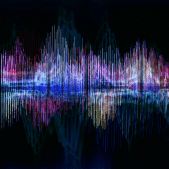Differential-mode (DM) and Common-mode (CM) Wanted signals are always DM: they flow along the ‘send’ conductor, and flow back along the ‘return’ conductor(s). In single-ended signalling, all the return currents share a common conducting structure, usually the 0V of the DC power distribution system. In balanced (or ‘differential’) signalling there is a dedicated conductor for … [Read more...]
Designing and Selecting Filters: The Importance of RF Reference
The Importance of the RF Reference The RF Reference is the node on a circuit’s schematic that we define as our reference voltage when designing an RF circuit or measuring its performance. For the most cost-effective EMC, all circuits (digital, analogue, switch-mode, etc.) should now be designed using RF techniques. It is common practice to call the RF Reference ‘earth’ or … [Read more...]
Designing and Selecting Filters: How Filters Work
Ignoring all the poles and zeroes in the filter textbooks: filters work by creating an intentional discontinuity in the characteristic impedance of a current path, reflecting radio frequency (RF) energy away from a protected circuit, or absorbing the RF energy (converting it to heat) – rather like a shield does, as will be described in Part 4 of this series. The greater the … [Read more...]
Use of Absorbers for Shielding
Background With the trending small size of electronic devices coupled with higher data speeds, there is a merging of the increasing physical closeness among components and the shrinking wavelengths associated with higher speeds. As wavelengths shrink, they approach the physical dimensions of components and devices, which result in increased “antenna effect” of noise. … [Read more...]
What is an EMC Risk Analysis?
Introduction The European EMC Directive (2014/30/EU) was updated in 2014, replacing the old directive (2008/108/EC) and became mandatory from April 2016 for any new product entering the EU from that date onwards. The change of directive was aimed at aligning the wording and terminology to ensure it was consistent with other CE Marking directives and implement standard text … [Read more...]
Cost-Effective Applications of EMI Gaskets
Introduction EMI gaskets are used extensively by the electrical/electronic industry to assist in complying with the various EMI radiated emission requirements. These requirements include compliance to DoD TEMPEST and EMI, and FCC and EU EMI test limits. As a rule of thumb the radiated emission TEMPEST requirements are about two orders of magnitude (40 dB) more stringent than … [Read more...]
Measuring Shielding Effectiveness with Two Near Field Probes
Introduction Sometimes you may find yourself needing to make a quick check on the shielding effectiveness (SE) of a material, such as plated plastic or shield gasket material. It’s possible to set up a quick measurement setup using near field probes by using a couple H-field (for magnetic field SE) or E-field (for E-field SE). You’ll also need a spectrum analyzer with … [Read more...]
Troubleshooting Radiated Emissions at the EMC Test Lab
Note: This is an excerpt from the book, EMI Troubleshooting Cookbook for Product Designers, by Patrick André and Kenneth Wyatt. See Reference 1. Introduction Radiated emissions are by far your highest risk when performing compliance testing at the test facility. With all the high-speed digital circuitry inside electronic products today, it becomes all too easy for harmonics … [Read more...]
5 Ways Signal Noise Can Impact Electrical Equipment
Accurate data acquisition is often critical in various engineering and technical projects. However, a pervasive yet often-overlooked issue that arises in the system is signal noise. This unwanted electrical interference, originating from multiple sources, can corrupt measurements, hinder communication, and compromise equipment integrity. Recognizing the Symptoms: … [Read more...]
EMC and EMI Simulation for Launchers and Satellites
By: Yannis Braux and Stephen Murray CST Computer Simulation Technology Introduction EMC and EMI analysis plays an important role in ensuring the correct functioning of electronic systems and guaranteeing reliability throughout their lifetimes. This task is all the more difficult and crucial when the system is complex or exists in a challenging EM environment. This … [Read more...]
- « Previous Page
- 1
- 2
- 3
- 4
- …
- 24
- Next Page »













